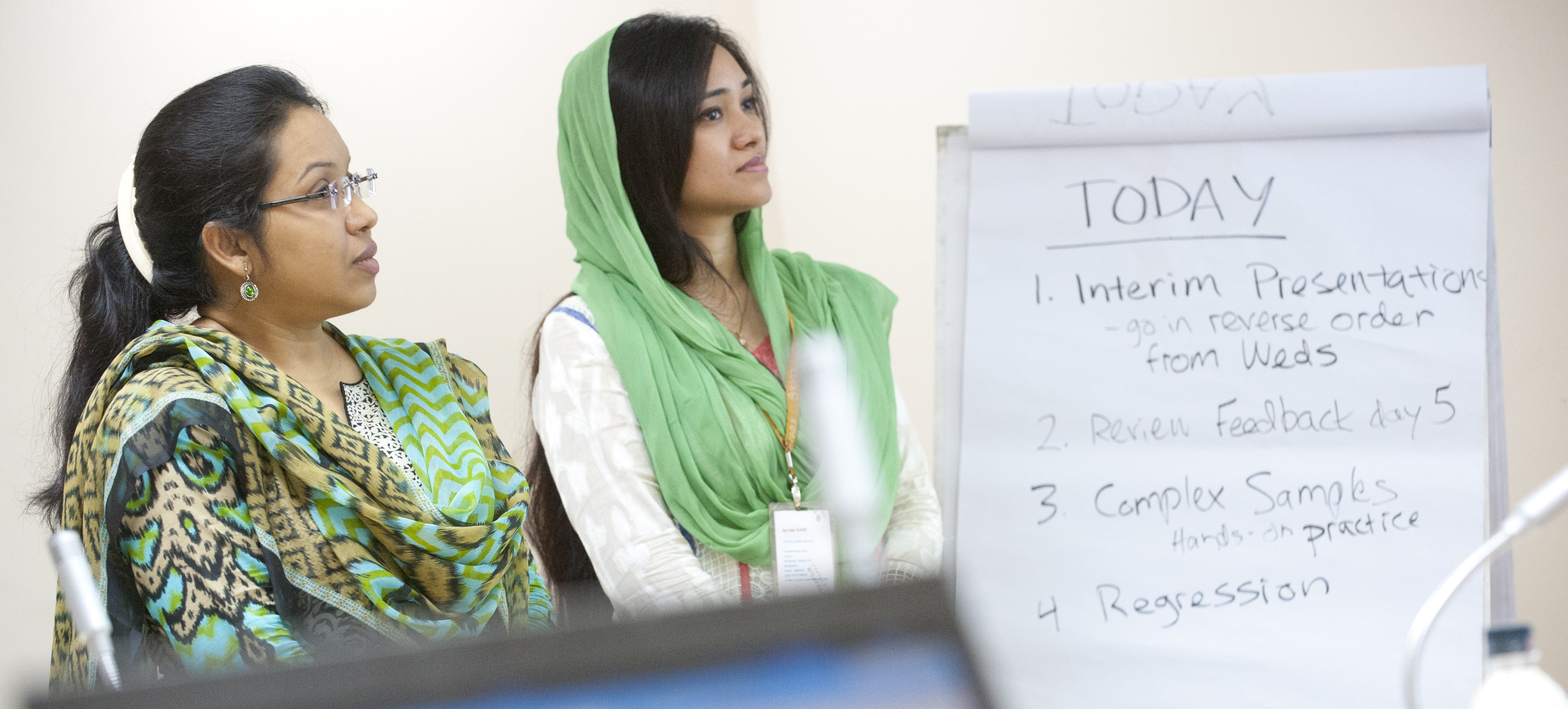Journal Articles
Search our database of 1000's of peer-reviewed journal articles that feature DHS data.
Featured Studies
Featured research topics go beyond a single research paper and often include multiple publications and user-friendly summaries and dissemination materials.
The DHS Fellows Program
Researchers in DHS countries work with DHS analysts to design, analyze, and write a publishable paper.
DHS Analysis Blogs
Read more about our recent research, innovative methods, and success stories.
Research and Further Analysis

The DHS Program's in-house Research and Analysis team conducts rigorous, timely, and innovative mixed-methods research on topics related to global public health, demography, and social epidemiology. Our team also trains, mentors, and closely collaborates with fellow researchers and stakeholders who are driven to utilize DHS Program surveys and other survey data to inform programs and policies in various countries and contexts.
Visit the publications search for a full list of publications. Also, go to the journal articles search for a full list of published journal artilcles that feature The DHS Program data.
DHS Research Reports
May 2022
Profile and Correlates of Persons Living with DisabilityIt is estimated that approximately 15% of the global population live with a disability and this can vary greatly by country and by population subgroups.
Topics: Disability, Domestic Violence, Wealth/Socioeconomics
Sep 2021
Guidance and Recommendations for the Use of Indicator Estimates at Subnational Administrative Level 2The Demographic Health Surveys (DHS) are designed to provide reliable estimates of survey indicators primarily at the national level, as well as the first subnational administrative level.
Topics: Geographic Information
Sep 2021
Spatial Modeling for Subnational Administrative Level 2 Small-Area EstimationSubnational estimates of the health and demographic indicators recorded in the Demographic and Health Surveys Program are of great importance for prioritizing resources and assessing if target levels for indicators are being attained.
Topics: Geographic Information
Sep 2021
Supplementary Appendices: Supplementary Information for Spatial Modeling for Subnational Administrative Level 2 Small-Area EstimationSpatial Analysis combines the detailed geographic data collected in the DHS surveys with other DHS or 3rd party data to provide geographic analysis of key demographic and health topics..
Topics: Geographic Information
Aug 2021
Levels and Trends of Infertility and ChildlessnessInfertility is a significant reproductive health issue for couples worldwide.
Topics: --
Aug 2021
Measurement Approaches for Effective Coverage EstimationEffective coverage is increasingly being used to evaluate maternal and child health programs.
Topics: Child Health and Development, Health facilities/SPA surveys, Maternal Health
Aug 2021
Understanding the Link between Children's Living Arrangements and Children's Vulnerability, Care, and Well-being: The Role of Household-based SurveysThis paper examines the role that household surveys – such as the Demographic and Health Surveys (DHS) and the Multiple Indicator Cluster Surveys (MICS) – can play in increasing our understanding of the influence of living arrangements on children’s vulnerability, care, and well-being.
Topics: Child Health and Development
Aug 2021
Review of Health Facility Referrals for Severe Malaria in DHS Program SurveysThis paper examines the severe malaria referral process for 188,686 children tested for malaria and anemia in 37 surveys across 19 countries in sub-Saharan Africa collected between 2011 and 2018.
Topics: Malaria
Aug 2021
Correlates of Secondary InfertilityThe experience of infertility has social, economic, and psychological effects on women and their partners.
Topics: Fertility and Fertility Preferences
Jul 2021
Young Women's Empowerment and Fertility IntentionsFertility intentions among young women are important drivers of future fertility trends.
Topics: Family Planning, Youth